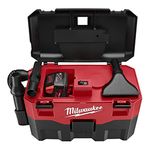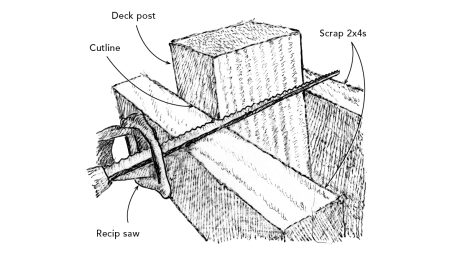Testing Worm-Drive Saws
Still powerful and durable, the newest models have lost weight and gained some useful features.

Synopsis: Worm-drive saws have a reputation for being straightforward, heavyweight powerhouses, strong enough to cut through just about anything with the right blade. In testing seven widely available worm-drive tools, Oregon builder Scott Grice discovered a couple of favorable new realities: Today’s saws are lighter than they used to be, and they also now can have some useful features, including rafter hooks, lighted plugs, onboard Allen wrenches, and better blade guards. In the end, Grice favored the Skil Mag SHD77M, but he had positive comments for each saw reviewed. This article includes a sidebar illustrating the two different gear mechanisms these saws use (worm vs. hypoid).
Magazine extra: Watch a video of Scott Grice demonstrating how to use a worm-drive saw’s weight to your advantage.
I have used a worm-drive circular saw daily for the past 13 years and have become so comfortable with it that I hardly give it a second thought. I started out with the Skil HD77, then switched to the Skil Mag seven years ago. My worm-drive saw is essential for rough framing, but I also use it for finish work as well as for cutting concrete, rebar, cement siding, PVC pipe, or anything else that gets in my way.
Unlike a few years ago, when Skil saws were the standard for worm drives, today there are seven professional-quality saws that are widely available. They boast features like plugs that light up, rubberized levers, and blade wrenches that ride in the handle when not in use. All seven saws reviewed here use 7 1⁄4-in. blades.
I used these saws on job sites and in my shop, where I checked them for their proficiency at making miter and bevel cuts and tested their ability to hog through beam stock. Versatility is the feature I prize most in these saws. Saws that were powerful but hard to maneuver didn’t score as high as saws that bogged down when really pushed but were easy to use in a variety of ways.
After I completed my testing, I also gathered together seven carpenters, ranging in discipline from rough framer to cabinetmaker, and let them try the saws. I incorporated their observations into this review, but you can go to FineHomebuilding.com to see more-detailed reviews from some of these other tradesmen.
Worm-drive saws have more torque
The worm in worm-drive circular saw refers to the wormlike linear gear that transfers the motor’s power to the larger gear that encircles the blade arbor. (DeWalt and Makita use a hypoid gear.) The gear defines three qualities of the saw. First, the mechanical advantage of the gear increases cutting torque while slowing the blade to 4400 rpm (as opposed to about 5800 for a sidewinder, or direct-drive saw). With a thin-kerf carbide blade, these saws are almost unstoppable.
Second, the blade sits on the left side of the motor. For righthanded people or for lefties who cut with their right hand, this orientation makes the blade fully visible, without the motor housing obstructing the view. Third, the motor’s body is parallel to the direction of the cut, making the saw longer rather than wider, which improves the saw’s reach. Of course, it also makes the saw nose-heavy, which can be a benefit if you know how to handle it.
The extra torque of a worm drive causes a kick when the trigger is pulled. The Skil saws had about the greatest kick. The DeWalt had the least; it’s almost unnoticeable. The Makita also had very little. Kick is easy to account for, but every once in a while, it surprises you. Zero kick is a nice benefit.
For more photos and details, click the View PDF button below:
Fine Homebuilding Recommended Products
Fine Homebuilding receives a commission for items purchased through links on this site, including Amazon Associates and other affiliate advertising programs.

Milwaukee Cordless Shop Vac (0880-20)

Musings of an Energy Nerd: Toward an Energy-Efficient Home

Code Check 10th Edition: An Illustrated Guide to Building a Safe House


























